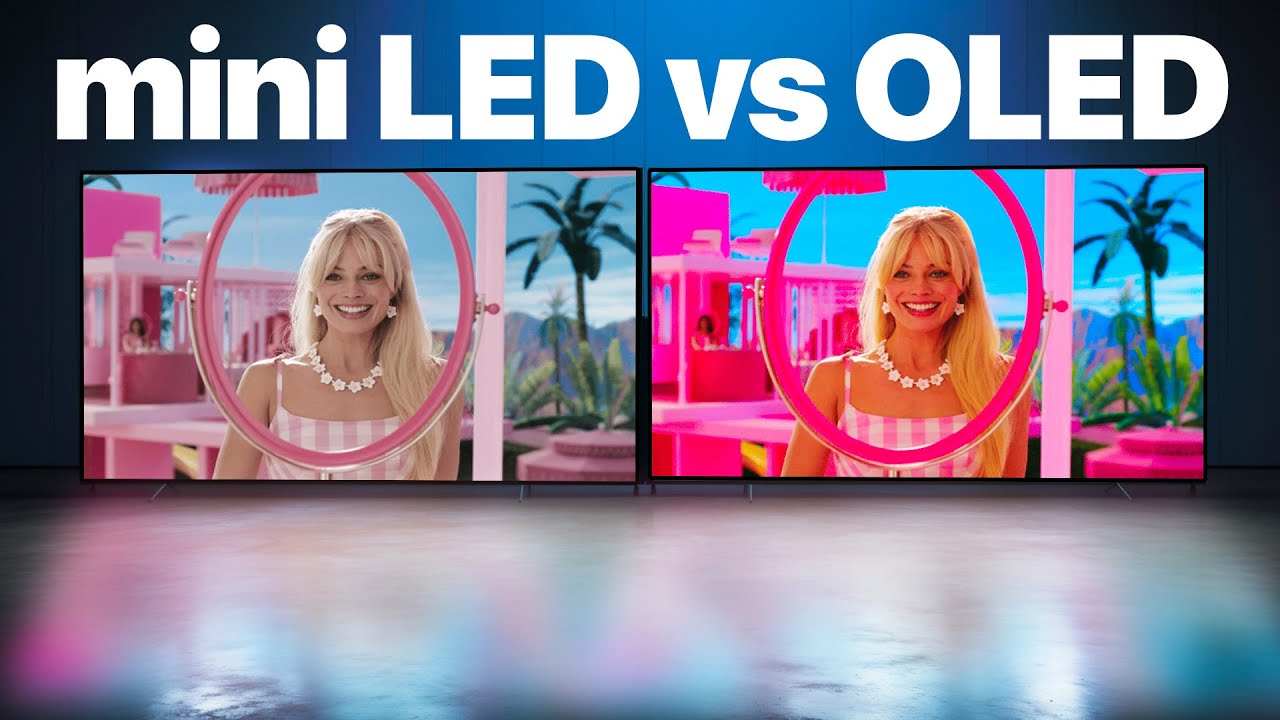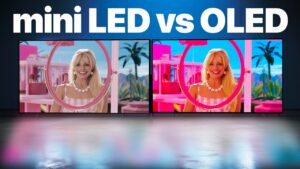As display technology evolves, Mini LED and OLED have emerged as two leading options for laptop and monitor screens. Both technologies offer exceptional visual quality, but they cater to different needs and preferences. Here’s a breakdown of the key differences and which display might suit you best.
1. What is Mini LED?
Mini LED technology uses thousands of tiny LEDs for backlighting, providing better control over brightness and contrast compared to traditional LED displays.
Advantages of Mini LED:
- Improved Brightness: Mini LED displays can achieve much higher brightness levels, making them ideal for use in well-lit environments.
- Enhanced Contrast: With local dimming zones, Mini LED offers better contrast than standard LED displays, though not as precise as OLED.
- Durability: Mini LED panels are less prone to burn-in compared to OLED displays.
- Cost-Effectiveness: Typically more affordable than OLED for larger displays.
Best For:
- Users who need bright, high-contrast displays for tasks like graphic design in bright rooms or general productivity.
- Gamers who value high refresh rates without the risk of burn-in.
2. What is OLED?
OLED (Organic Light-Emitting Diode) displays don’t require a backlight because each pixel emits its own light. This allows for perfect blacks and stunning color accuracy.
Advantages of OLED:
- Perfect Blacks: OLED pixels can turn off completely, delivering true blacks and infinite contrast ratios.
- Vivid Colors: OLED displays offer rich, vibrant colors, making them ideal for media consumption and creative work.
- Wide Viewing Angles: Colors and brightness remain consistent, even at extreme viewing angles.
- Thin and Lightweight: OLED panels are typically thinner, leading to sleeker device designs.
Best For:
- Content creators, photographers, and videographers who need accurate colors.
- Movie enthusiasts who want a cinematic experience with deep blacks and vivid visuals.
3. Comparison of Key Features
| Feature | Mini LED | OLED |
|---|---|---|
| Brightness | Higher peak brightness | Moderate brightness levels |
| Contrast | Enhanced, but not as perfect as OLED | Infinite contrast with true blacks |
| Color Accuracy | Excellent, but slightly behind OLED | Industry-leading color accuracy |
| Viewing Angles | Good, but not as wide as OLED | Excellent, with minimal color distortion |
| Durability | More resistant to burn-in | Susceptible to burn-in over time |
| Price | Generally more affordable for large displays | Higher cost, especially for larger screens |
4. Which One Should You Choose?
Choose Mini LED If:
- You need a bright display for outdoor or brightly lit environments.
- You’re on a budget but want excellent visual quality.
- You’re concerned about the risk of burn-in from static images.
Choose OLED If:
- You prioritize deep blacks and vibrant colors for creative work or media consumption.
- You want a sleek, lightweight device.
- You’re willing to invest in premium display technology for the best visuals.
5. Future Trends
Both Mini LED and OLED are evolving rapidly, with manufacturers improving their technologies to address existing drawbacks. For instance:
- Mini LED displays are becoming more affordable and increasing the number of dimming zones.
- OLED technology is focusing on mitigating burn-in and enhancing brightness levels.
Conclusion
The choice between Mini LED and OLED depends largely on your specific needs and how you use your laptop or monitor. While Mini LED excels in brightness and durability, OLED dominates in contrast and color accuracy. By understanding the strengths of each technology, you can make an informed decision that aligns with your priorities.

